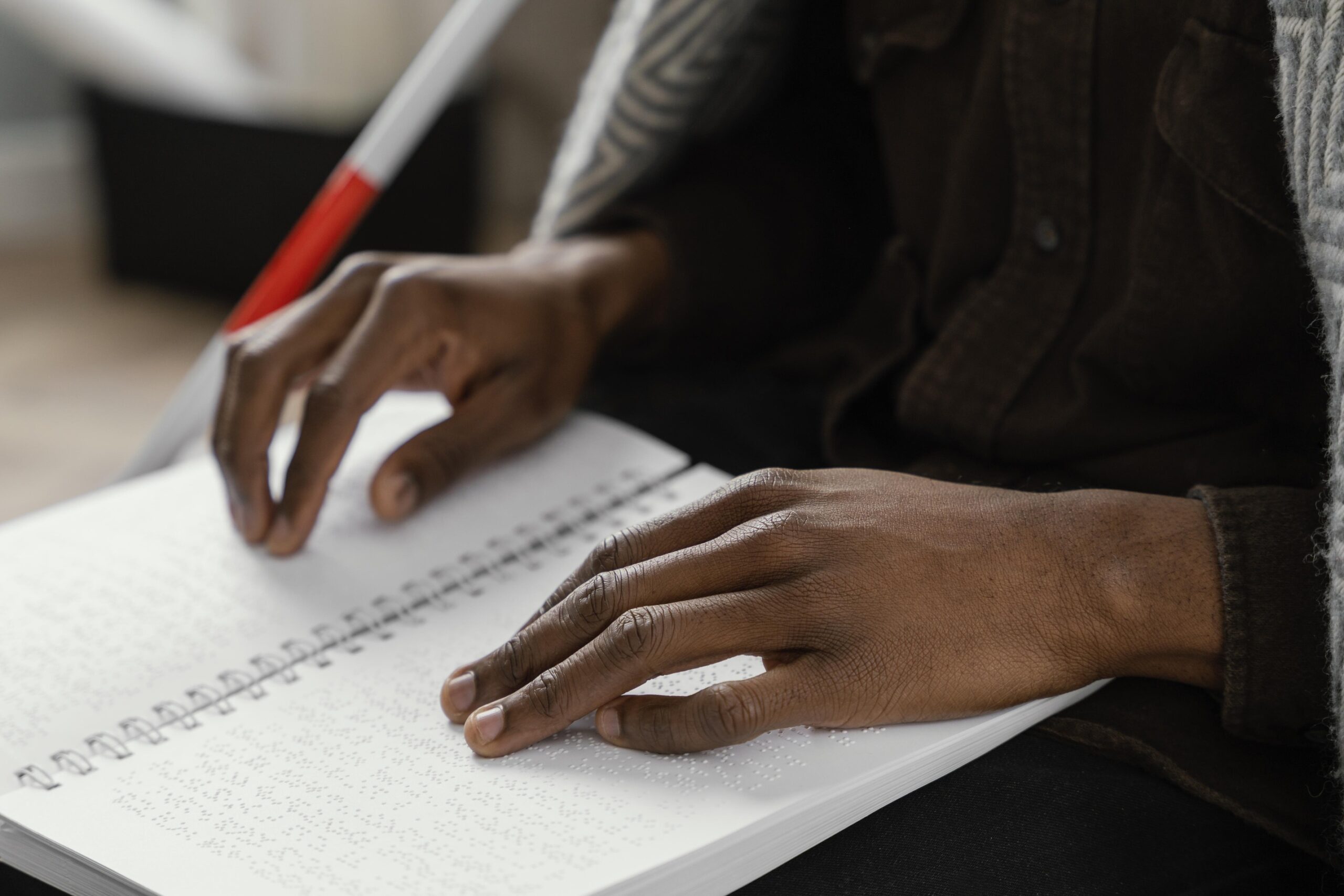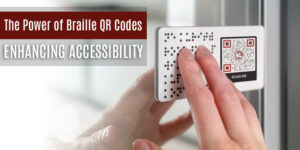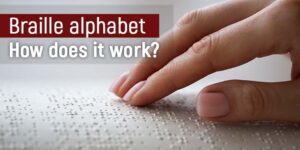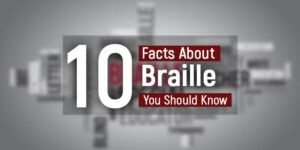“Literacy is a bridge from misery to hope”- Kofi Annan
Literacy brings progression and stability to society. Without it, society descends into chaos, false beliefs, and barbarism. However, not everyone has the same level of access to literacy opportunities. People with impaired vision face many challenges when it comes to accessing written materials and learning to read and write.
According to the World Health Organization in 2021, there are approximately 285 million people with visual impairments worldwide. Research indicates that literacy rates among individuals with visual impairments are often lower than those among individuals without visual impairments.
The lack of braille services, or active braille transcription of resource materials, is a major contributor to this. In this blog post, we will discuss the nature of literacy, its primacy in the betterment of society, and the growing disparities in literacy among individuals with visual impairments.
Understanding The Causes of Disparities in Literacy for The Visually Impaired
- One major barrier to literacy for visual impairments individuals is a lack of access to educational material. Textbooks and other written material like newspapers are often not accessible to individuals in a form that can be read using braille transcription. Additionally, they may not have access to the education system that is equipped to accommodate their needs.
- Another factor that contributes to disparities in literacy rates among individuals with visual impairments is a lack of support for learning. Teachers and other educators may not be trained in how to teach literacy skills to students with visual impairments, which can make it more difficult for these students to learn. Additionally, students with visual impairments may require more individualized support in order to develop literacy skills, but resources for this type of support may not be available.
- Finally, navigating written materials can be a significant challenge for individuals with visual impairments. Even with text-to-speech technology, individuals with visual impairments may struggle to navigate complex written materials, such as textbooks or research articles. This can make it difficult for them to engage with written materials, limiting their opportunities to develop literacy skills.
How to Address this Issue
To bridge the gap and address the rising disparities in literacy among individuals with visual impairments, it is crucial to raise awareness regarding braille as well as take adequate action to eradicate inequality. Various approaches can be taken to address and eradicate these literacy disparities.
The use of braille services and assistance regarding braille is the most efficient way for a visually impaired person to engage in literary and educational activities without facing problems.
Using braille the blind can access visual data as well that they cannot perceive. Teachers should encourage the visually impaired to use braille services to stop relying on their peers and find independence in their lives. Additionally, educators should receive training in how to teach literacy skills to individuals with visual impairments.
Individualized support can also be a valuable strategy for addressing literacy disparities among individuals with visual impairments. Students with visual impairments may benefit from working with a tutor or teacher who can provide one-on-one support, as well as from participating in group activities that focus on developing literacy skills. These activities may include braille reading and writing classes, as well as discussion groups focused on reading and writing.
Organizing social interactions and braille campaigns and social interactions can spread knowledge in the best way possible – through human interactions. People can come across new scripts, discuss ways to face the day with other visually impaired people, discuss various educational things they learned, and so on.
Conclusion
Braille transcription services play an essential role in exterminating the literary disparities among the visually impaired populations by educating them and giving them a way to interact with the world. Addressing literacy disparities among individuals with visual impairments is vital for promoting equal opportunities and enhancing their quality of life.
Disparities in literacy rates among visually impaired individuals are a significant issue that must be addressed. By increasing access to resources and education as well as increasing awareness and understanding among educators and society as a whole we can work to reduce these disparities.
Educators and society must be educated on the unique needs of visually impaired individuals and the importance of inclusive education. By addressing these challenges we can bridge the literacy gaps among individuals with visual impairments and enhance their chances of achieving academic and career success. At Braille Music and More, we care for the requirements of the visually impaired and know how they perceive the world differently. We provide braille services such as private lessons, one-to-one tutoring, and high-quality braille transcription for various genres, including Foreign Languages, at affordable rates.







